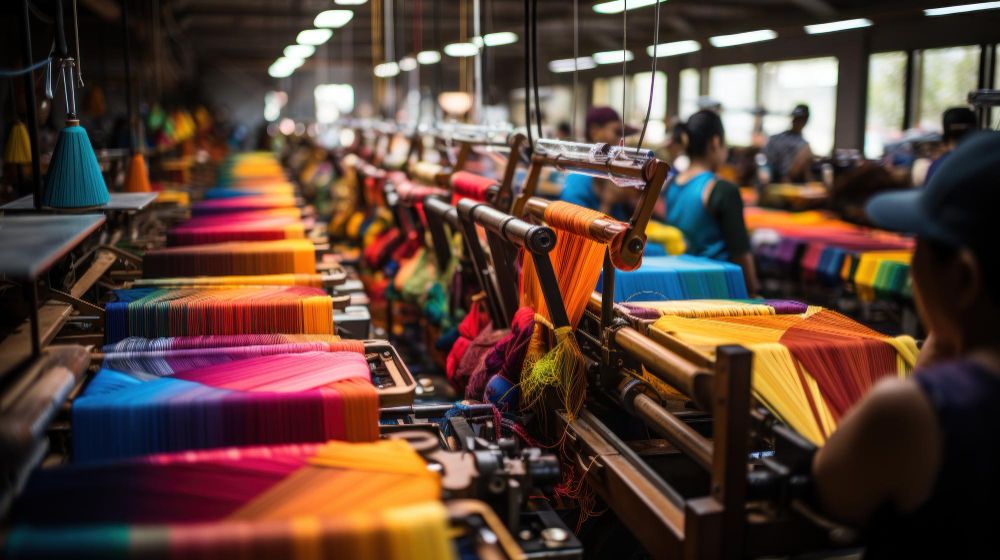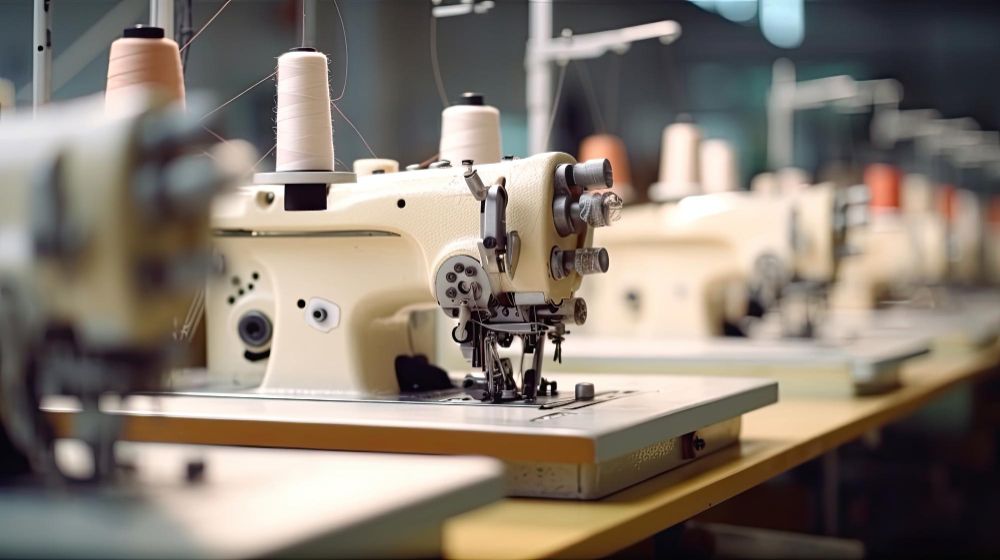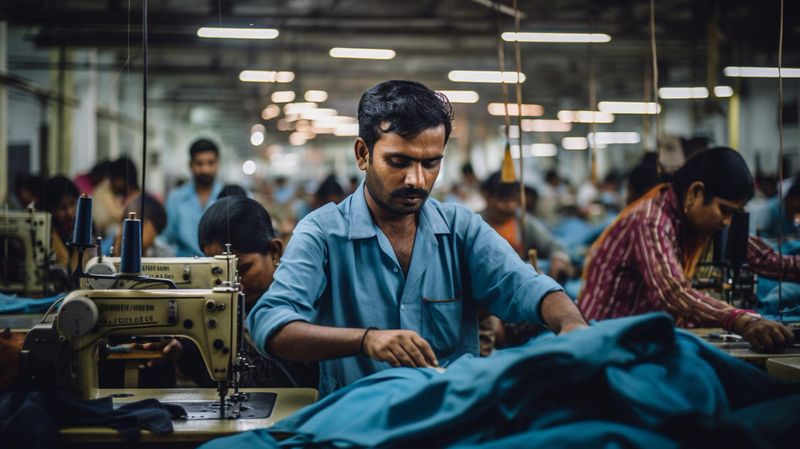Productivity has become a ubiquitous term in today's industrial landscape, playing a critical role in both the success of individual firms and the overall economic advancement of a nation. Essentially, high productivity involves completing tasks in the shortest time possible, using minimal resources and costs, all while maintaining quality and minimizing waste.
Clothing manufacturing organizations face immense pressure to innovate and introduce new products swiftly, given the shrinking product life cycles. With the complexity of garment styles, fabric variations, and diverse manufacturing processes, coupled with escalating demands for quality, uniqueness, and shortened production cycles, meticulous planning of manufacturing activities is pivotal for achieving competitiveness in the market.

The fashion manufacturing sector operates within a dynamic environment characterized by rapidly evolving trends and ever-changing consumer preferences. To thrive in such a landscape, fashion manufacturing companies must prioritize increasing productivity.
However, achieving optimal productivity entails more than just efficient production processes; it demands a holistic approach that encompasses various operational facets, including supply chain management, employee development, and sustainable practices.

Measuring productivity in the garment industry involves assessing various factors such as output per labor hour, units produced per machine, or revenue generated per employee. At its core, productivity is a quantitative measure of efficiency, reflecting the ratio between what is produced and the resources utilized in production.
This productivity equation is expressed as:
Output
Productivity = …………………………
Input
Enhancing productivity in the garment industry necessitates a multifaceted approach that integrates strategic planning, streamlined processes, effective management practices, and the integration of technological solutions. For production-oriented personnel within garment manufacturing, the primary objective is to consistently seek avenues for productivity improvements.
For garment manufacturers and factory owners, the pursuit of enhanced productivity is perpetual.
Constant exploration of new ideas and techniques is essential to drive productivity levels higher, ultimately leading to increased profitability.

Streamlining Production Processes:
Apply lean manufacturing principles to eradicate inefficiencies and optimize production workflows. This involves identifying and eliminating non-value-added activities, optimizing workflow, and improving resource utilization.
Allocate resources towards automation and technology to enhance efficiency in activities like cutting, sewing, and packaging. Automated machinery can significantly reduce production time and minimize errors.
Utilize software solutions for production planning, inventory management, and order tracking to ensure smooth operations and timely delivery of products.

Enhancing Supply Chain Management:
Forge robust partnerships with suppliers and vendors to guarantee punctual delivery of raw materials and components. Maintain open communication channels to address any issues promptly.
Introduce just-in-time (JIT) inventory management practices to mitigate inventory holding costs and diminish the likelihood of both overstocking and stockouts.
Explore alternative sourcing options and diversify the supply chain to mitigate risks associated with disruptions such as natural disasters or geopolitical events.

Investing in Employee Training and Development:
Offer thorough training initiatives to employees aimed at improving their expertise and understanding in various domains such as garment construction techniques, quality control standards, and machine operation.
Promote a culture of ongoing enhancement, urging employees to share ideas for refining processes and enhancing efficiency.
Acknowledge and incentivize employees for their role in enhancing productivity and nurturing a sense of ownership and motivation among the workforce.

Implementing Quality Control Measures:
Set stringent quality control benchmarks to guarantee that products align with customer expectations and adhere to industry standards.
Introduce quality assurance protocols throughout all production phases, spanning from material examination to final product assessment, to detect and rectify any anomalies or non-conformities.
Apply statistical process control methodologies to oversee production procedures and pinpoint areas for enhancement.

Embracing Sustainable Practices:
Implement sustainable manufacturing practices to mitigate environmental impact and enhance resource efficiency. This encompasses the utilization of eco-friendly materials, reduction of waste generation, and optimization of energy usage.
Inform and engage employees and stakeholders regarding the significance of sustainability, actively involving them in initiatives directed towards diminishing the company's carbon footprint.
Leverage sustainability as a competitive advantage by highlighting eco-friendly practices to attract environmentally conscious consumers.

#Six ways to increase productivity
The six basic productivity improvement techniques are widely used in the garment industry to increase production.
- 1. Technology-based:
- Implement Computer-Aided Design (CAD) software to streamline the design process, allowing for faster prototyping and more efficient use of resources.
- Utilize Computer-Aided Manufacturing (CAM) systems to automate garment cutting and sewing processes, reducing manual labor and minimizing errors.
- Invest in advanced machinery and equipment, such as automated cutting machines and sewing robots, to increase production speed and accuracy.
- 2. Employee-based:
-Offer thorough training initiatives designed to improve the expertise and proficiency of garment factory workers, empowering them to execute tasks with greater efficiency.
- Provide comprehensive training programs aimed at enhancing the skills and competence of garment factory workers, enabling them to perform tasks with increased efficiency and effectiveness.
- Implement incentive schemes or performance-based rewards to motivate employees and recognize their contributions to productivity improvements.
- 3. Material-based:
- Source high-quality materials that are durable and easy to work with, reducing the likelihood of defects and rework.
- Optimize material usage through pattern nesting software, which minimizes fabric waste and maximizes yield per roll.
- Establish strategic partnerships with suppliers to ensure timely delivery of materials and minimize production delays.
- 4. Process-based:
- Streamline production processes by identifying and eliminating non-value-added activities, reducing cycle times, and optimizing workflow.
- Implement Lean manufacturing principles, such as 5S (Sort, Set in order, Shine, Standardize, Sustain) and Kanban, to improve efficiency and eliminate waste.
-Perform time and motion analyses to pinpoint areas where process optimization and workflow redesign can be implemented for greater efficiency.
- 5. Product-based:
- Standardize product designs and specifications to simplify manufacturing processes and minimize variability.
- Develop modular product designs that allow for easy customization and adaptation to changing customer preferences.
- Conduct regular product evaluations and feedback sessions to identify areas for improvement and innovation.
- 6. Management-based:
- Establish clear goals and performance metrics to track productivity levels and identify areas for improvement.
- Implement effective production planning and scheduling techniques to optimize resource allocation and minimize idle time.
-Encourage transparent communication pathways between management and employees to foster collaboration and facilitate problem-solving.
-By implementing these productivity improvement techniques, garment manufacturers can enhance efficiency, reduce costs, and ultimately increase their competitiveness in the global market.

Conclusion:
By adopting these productivity improvement techniques, garment manufacturers not only enhance efficiency and reduce costs but also solidify their market position. Incorporating advanced technologies, investing in employee development, and committing to sustainable practices are pivotal. Embracing these strategies, along with innovative solutions like Zyod, can significantly elevate competitiveness in the global arena.






